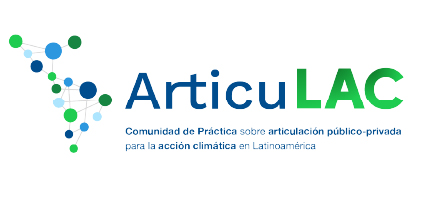


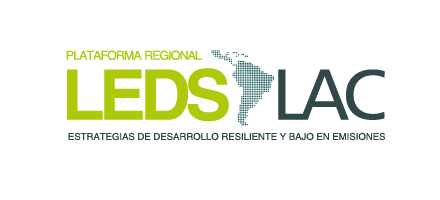
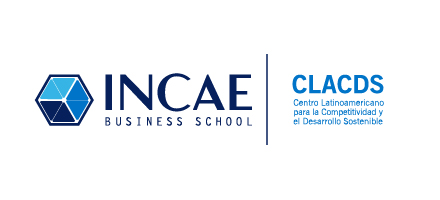
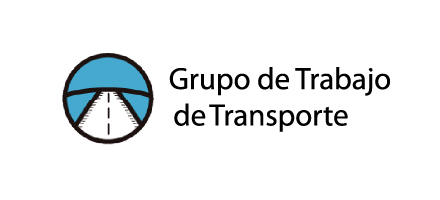
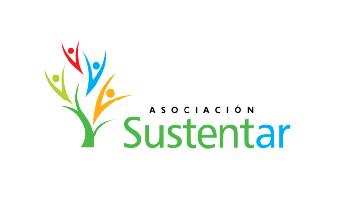
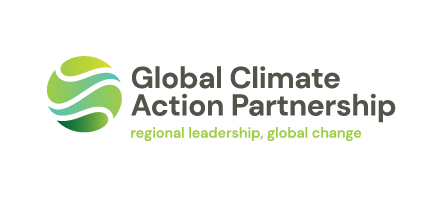
Link between energy and decarbonization
of transportation: roles of public and private stakeholders
STAKEHOLDERS, NEEDS, CONTRIBUTIONS AND INTERESTS
The conceptual map shows that the connections between the two sectors are multiple and complex. Each connection involves relationships between different actors that influence the elements of the system. The impact on these elements and their interactions with other elements of the network are governed by the interests that motivate each actor. Dialogue and collaboration make it possible to glimpse these interests, meet the needs of each actor, and enable significant contributions to the formulation and implementation of policies and strategies. Promoting coordinated work between energy and transportation stakeholders optimizes available resources and increases the impact of their actions.
Based on two connections between the energy sector and the transport sector, selected by the participants of the first workshop, the following is an in-depth analysis of the different actors involved (belonging to the private, public and third sectors), identifying their respective interests, needs and contributions in the articulation for the decarbonization of transport. The information was presented in a concise and practical way, in order to serve as a support to strengthen and complement the coordinated work between the members of different sectors and areas.
- Actors
- Interests
- Needs
- Contributions
ACTORS
-
PUBLIC SECTOR
Climate and sectoral policy guidelines
National and subnational governments
Regulatory bodies
Political parties
-
PRIVATE SECTOR
Energy companies and biofuel producers
Financial institutions
Transportation operators
Technology and equipment suppliers, vehicle manufacturing (including assemblers)
Business associations
-Transport user companies
See more...
-
THIRD SECTOR
Academia, and R&D centers NGOs and civil society
Trade union groups
Consumer associations
Media and communications
International cooperation agencies, especially those focused on decarbonization of the energy sector (e.g., Net Zero World and USAID).
See more...
INTERESTS
-
PUBLIC SECTOR
Promote joint work for compliance with the NDCs and demonstrate interest in climate change, integrating the private sector into the dialogue roundtables.
Boosting the energy transition and the decarbonization of transport, maintaining the confidability of the electricity systems.
Maintain fiscal sustainability and secure tax revenues.
Strengthen governance.
Promote the generation of green jobs related to energy efficiency in the transportation sector, ensuring gender equality.
See more...
-
PRIVATE SECTOR
Optimize the use of human, economic and material resources, among others, increasing profitability and profit margins.
-
THIRD SECTOR
Provide and receive financing (financiers/NGOs/acad emia) and technical assistance.
Interact with stakeholders to promote the implementation of social, environmental and/or economic impact measures.
Raise awareness, develop and disseminate scientific research and local public and private initiatives.
Raise the standards of products and services received by final consumers, ensuring quality, inclusiveness and sustainability.
See more...
NEEDS
-
PUBLIC SECTOR
Strengthen their technical capabilities and knowledge of best practices and international standards.
Facilitate and promote multisectoral spaces for exchange and coordination.
Eficientize and increase public services.
Promote both local, regional and national economic industry linked to the energy transition and decarbonization of transportation (e.g., programs to promote local vehicle construction, training of skilled labor for new trends in transportation, etc.).
See more...
-
PRIVATE SECTOR
Identifify new business opportunities (new products and services, markets, etc.).
Receive financing and incentives.
Knowing and enhancing comparative advantages to increase competitiveness.
Develop and make visible new, more efficient business models, strengthening their ecosystem.
Generate spaces for conversation with local and national governments.
Maintain the relevance of their activity in the sector. Improve their working conditions.
Obtain public benefit for implementing efficiency/sustainability actions.
To have clear guidelines for comprehensive public planning for investment decision making.
Participate in dialogue with the public sector and other stakeholders.
Strengthen its technical and operational capabilities.
Explore new sources of financing.
To have support from the public sector in terms of benefits for training/professionalizing its human resources.
To ensure competitiveness and, therefore, its permanence in the market.
See more...
-
THIRD SECTOR
Receive funding to develop studies, training and success stories that can be replicated in the region.
Participate in the multisectoral dialogue roundtables.
Increased participation in the labor market (green jobs and gender equality).
CONTRIBUTIONS
-
PUBLIC SECTOR
Ensure fair and equitable access to public transportation and energy for the entire population.
Formulate multisectoral public policies and carry out controls to ensure compliance.
Demonstrate clear guidelines for comprehensive planning and coordinate intra-institutional and multisectoral coordination.
Communicate the deadlines stipulated within the planification and accompany all sectors and stakeholders to facilitate change and reduce resistance.
Clearly direct support mechanisms to promote/organize the energy transition.
Relocate subsidies and implement an incentive scheme to boost diversification of the energy matrix and decarbonization of transportation.
Analyze the taxes levied as a mechanism to detect opportunities to promote decarbonization (e.g., collection of taxes on fossil fuels).
Promote good practices by example, applying policies in public agencies.
Demand and support good practices in the private sector, granting benefits to those who comply.
Disincentivize and restrict products or technologies that do not contribute to the energy transition or to the decarbonization of transportation.
Promote energy efficiency certification and develop technical certifications for the transport and infrastructure operators involved.
Create legislation and regulation for adaptation during the transition, such as on clean and alternative fuels (liquid and gaseous biofuels), as well as legislation regarding waste management (batteries, old cars, etc.) and retrofit vehicles.
Development of fiscal incentives for the production or importation of cleaner vehicles.
See more...
-
PRIVATE SECTOR
Improve technological and operational efficiency.
Promote political will and actively participate in the dialogue roundtables, facilitating the appropriation of public policies.
Share experiences, know-how, carry out pilot projects.
Conduct monitoring and evaluation to disseminate and leverage political support.
Provide and receive training in efficient instrumentation of new technologies (e.g., electromobility, biofuels).
Provide signals on market behavior, especially on the demand for energy in the sector, to facilitate the transition required from the public sector.
Grant financing.
Commit to the joint development of programs with the public sector.
See more...
-
THIRD SECTOR
Generate knowledge (research, training, cases, etc.).
Generate and strengthen new capabilities in emerging technologies and alternative fuels.
Promote coordinated action among stakeholders.
Contribute to ensure continuity and follow-up of initiatives.
Facilitate spaces for dialogue in a transparent manner that generates trust and promotes coordinated action among stakeholders.
See more...
MAIN FINDINGS
Driving the transition to more efficient and sustainable forms of mobility, with low or zero emissions, depends on the coordination and collaboration of all the actors in the ecosystem. Likewise, it requires strategic planning with clear goals and a roadmap to enable change, as well as regulatory frameworks that promote the generation and use of clean energy, instruments to promote technological improvements in vehicles and other elements of the system, awareness and involvement of the population, development and dissemination of specialized studies and the application of best practices and local public and private initiatives, among other actions necessary to generate change.
The analysis shows how the needs of a group can be met with the help of the contributions of others, thus demonstrating the importance and necessity of working together in order to promote multi-sectoral and multi-stakeholder instances that lead to the articulation and integration of efforts.
The private sector has a strong interest in maintaining the profitability of its activities, with the objective of generating a positive impact on its ecosystem. Their needs, interests and contributions vary according to the role they assume.
For its part, the third sector contributes to knowledge generation and capacity building, as well as ensuring the continuity of decarbonization initiatives. By raising consumer awareness, the third sector can influence the demand curve in such a way that the market turns towards greater energy efficiency as a transition to decarbonization, as well as other measures such as the use of multimodal transport, where there is an offer for the user to make the decision to use it.
Both the third and private sectors share the need to be part of the dialogue with the public sector. At the same time, both sectors agree that they have the resources to contribute with their technical and experimental knowledge to foster replicability and promote efficiency within their own sector and in others. These contributions complement the public sector's need to strengthen its technical capacities, make its processes more efficient and increase its knowledge of best practices.
The public sector has the possibility of satisfying the needs of the private sector by defining clear public policies that demonstrate planning and logical guidelines so that the private sector can orient its actions, reducing the uncertainty of the investments to be made. If such a scenario exists, by applying follow-up, sanctioning and monitoring mechanisms, the public sector could demand and promote compliance with them.
For its part, the third sector can contribute to the monitoring and accountability of public policies and private strategies, taking a position of observer and data generator. At the same time, it represents an area of opportunity to collaborate through its human and knowledge capital, as well as through social demands, for the definition and realization of strategies, such as the implementation of new successful and sustainable business models.
ROLES OF PRIVATE AND PUBLIC STAKEHOLDERS
In light of the analysis of the actors involved in the nexus between the energy and transportation sectors, the question arises as to what each type of actor can do to promote and cooperate in the creation and implementation of private strategies and public policies that promote the decarbonization of transportation.
Identifying and defining the roles of private and public actors in the development of strategies and public policies for the decarbonization of transport is a valuable tool to contribute to overcoming barriers and limitations to decarbonization. At the same time, it allows identifying opportunities for cooperation and synergy.
Acting in a coordinated manner makes it possible to achieve more ambitious objectives in a more efficient manner, generating institutional strengthening and improving processes to move forward with optimal private strategies and public policies with broad and defined horizons. The following are some of the main roles of public and private actors, obtained from the work carried out in the workshops:
- Private actors
- Public Actors
PRIVATE ACTORS
-
PRIVATE STRATEGIES
Align their interests and activities to their country's decarbonization goals and to the SDGs in general.
Share knowledge, data and experiences related to the operation of the sector as well as decarbonization and technological replacements. Generate innovation of techniques and technologies that support the decarbonization of the sectors.
Streamline R&D, disseminate the benefits of technologies available in the market and generate strategic alliances with academia.
Exchange good practices and lessons learned among private sector actors based on the collection of baseline information, inventories and evaluation of their results.
Optimize production processes to increase their efficiency.
Seek eficiency in its processes through agreements with other private players and industrial symbiosis.
Do not reduce the quality of your services/products to achieve only a cost reduction.
Coordinate/manage joint strategies with the public sector.
See more...
-
PUBLIC POLICIES
Participate/involve in the formulation of public policies and regulations to convey their point of view regarding technical and economic/financial feasibility.
To give a greater perspective on the needs and barriers faced by the sector in order to contribute to decarbonization.
Facilitate spaces for dialogue to facilitate the creation of strategies and plans aligned with public policies.
To actively participate in the design of public policies within the framework of a long-term State climate agenda and, based on this, to develop future projects and management instruments.
-Understand that Business As Usual (BaU) is unsustainable for society and that the global context requires changes from all parties, even if it threatens the sustainability of their businesses.
Clarify to public authorities what are the individual and sector bottlenecks to meet the goals that the public actor requires. Likewise, make explicit the regulatory needs that the private actor may have (e.g., facilitating legislations on new technologies).
Create a competitive, transparent and enabling environment for economies of scale to promote the decarbonization of the sector.
See more...
PUBLIC ACTORS
-
PRIVATE STRATEGIES
Facilitate spaces for dialogue that promote the creation of aligned private strategies and plans.
Play a proactive role in providing data on the sector's activities.
Explain the needs they may have in the sector regarding private action, such as precise data and actions.
Clearly and proactively establish the targets and sub-targets needed to decarbonize transportation activities and achieve clean energy sustainability.
Apply both incentives and restrictive regulations appropriate to the context in order to obtain the desired results.
Evaluate the relocation of subsidies in order to promote private action related to decarbonization.
Develop financial mechanisms and instruments to facilitate the implementation of new technologies.
See more...
-
PUBLIC POLICIES
Create enabling environments for transition through policies, incentives, disincentives and constraints, with clear goals and objectives.
Maintain coherence between efforts and interests within governance systems (avoid conflicts between fiscal, energy, health, environmental, transportation, etc. policies).
Reformulate and/or update policies that currently generate ambiguity about discourse and action.
Integrate gender equity and the reduction of inequalities in policies related to the decarbonization of transportation and its nexus with energy.
Mapping the needs, interests, challenges and opportunities of all relevant stakeholders against a given public policy objective.
Facilitate the transitions of sectors that will be negatively impacted by the decarbonization of different activities, such as, for example, industries that will undergo a process of transformation of their products or services offered.
Establish and monitor indicators. Carry out the evaluation of the initiatives developed in pursuit of decarbonization, ensuring the availability and transparency of public data.
Enable and support from the public sector the generation of suitable conditions for multisectoral work and inclusive governance (committees, working groups, communities of practice, etc.).
See more...
MAIN FINDINGS
If the roles of stakeholders are aligned in the definition of private strategies and public policies, the process of transport decarbonization and long-term energy sustainability will be accelerated.
The role of the public sector is to formulate policies and regulations that foster an attractive environment for investment and the development of the private sector, while protecting the rights of individuals and ensuring environmental protection and the continuity of established policies.
Private actors can play different roles, depending on the connection points between the energy and transportation sectors being analyzed, for example, the generation of clean energy, the operation of electric grids, the development of new technologies, the charging infrastructure, the manufacture and supply of equipment and fuels, the training of technical and operational staff, the development of innovative financial models and instruments, and being a user of other services, among others. Their interactions with the public sector may be of different nature depending on that role. As regards the formulation of public policies, the private sector can strengthen them, contributing its vision of the business in order to build long-term strategies that bring together its own interests as well as those of the public.
